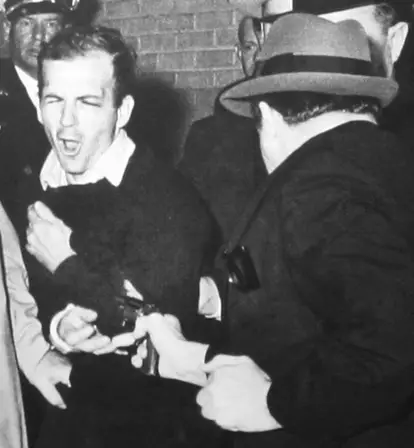Dallas club owner Jack Ruby had ties to the FBI and the mafia, but why he shot Lee Harvey Oswald on November 24, 1963, remains a mystery.
After President John F. Kennedy was assassinated on Nov. 22, 1963, American was in shock. But the nationwide hysteria only compounded on Nov. 24 when alleged assassin Lee Harvey Oswald was being escorted to the county jail through the basement of the Dallas police headquarters — and a man named Jack Ruby simply walked up to Oswald and shot him dead.
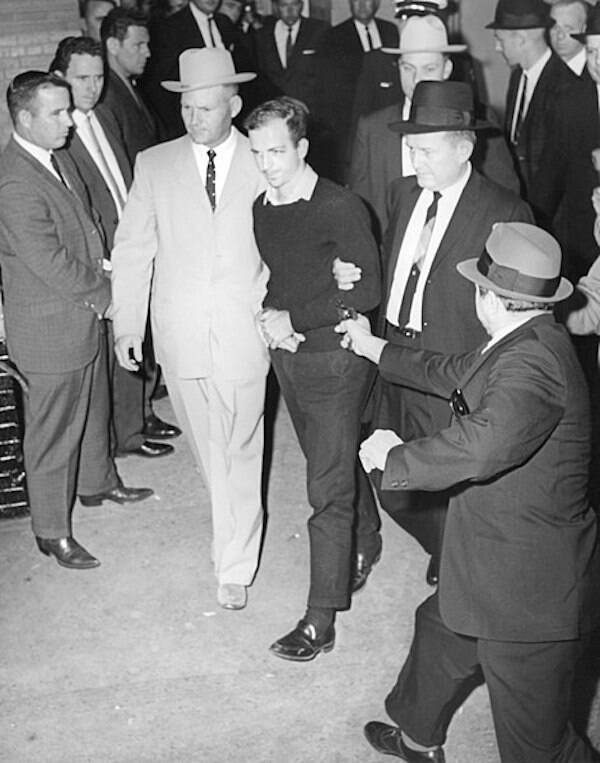
Wikimedia CommonsJack Ruby shot Lee Harvey Oswald in the abdomen with a .38-caliber revolver. He died an hour and a half later.
In a stunning murder captured on live television, the people of the United States watched Jack Ruby seal his place in history as the man who killed Lee Harvey Oswald. But ever since that day, America has been left with one big question: Why?
The Troubled Early Life Of The Man Who Killed Lee Harvey Oswald
According to the National Archives, Jack Ruby was born Jacob Leon Rubenstein in Chicago, Illinois. His exact birthday is a subject of confusion, with early records ranging from March 13 and April 25 to June 23 and other dates. Ruby eventually settled on March 25, 1911.
There’s no doubt he was born in 1911, but since the recording of births wasn’t required in Chicago before 1915, the official date was likely never recorded. Jacob Rubenstein had one older brother and three older sisters, the two oldest of whom were born in Poland before the family arrived in the U.S.
His father, Joseph Rubenstein, was born in Sokolov near Warsaw while Poland was still under the rule of Czarist Russia. He eventually entered the Russian army where he picked up alcoholism and his future wife, Fannie Turek Rutkowski.
In 1898, Rubenstein “walked away” from his military career and made his way to American through England and Canada.
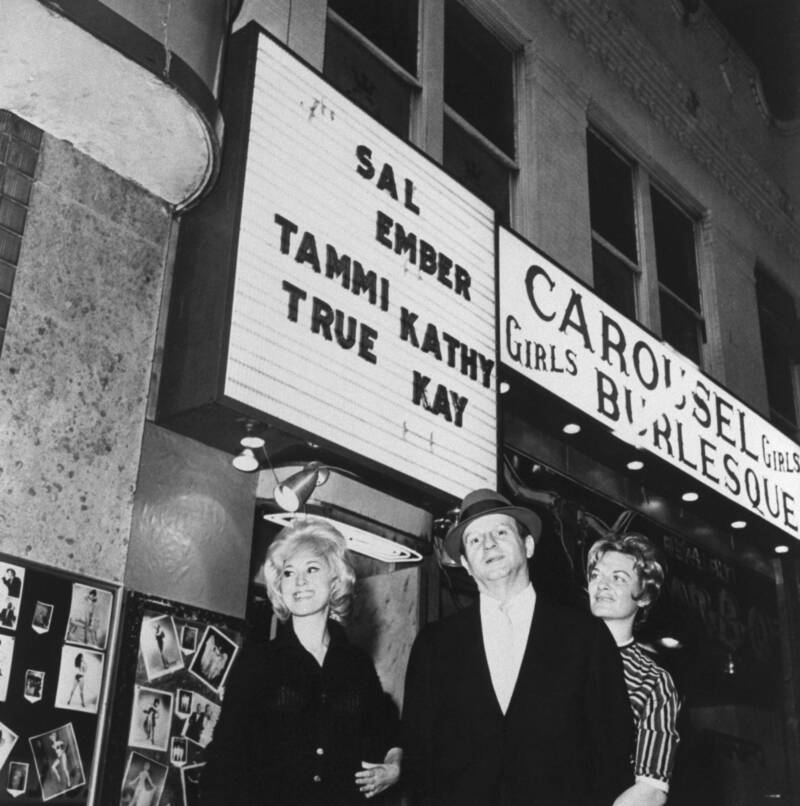
Corbis via Getty ImagesJack Ruby and two of his dancers outside of the burlesque Carousel Club. Ruby was prone to violence and erratic behavior, firing and rehiring dancers and often fighting random customers.
The primary language in Ruby’s childhood home was Yiddish as his mother didn’t speak fluent English. The family lived in four different homes in Chicago by the time Ruby was five years old, with his sister Eva describing one of the neighborhoods as being “below the middle class but yet it wasn’t the poorest class.”
Unfortunately, Jacky Ruby’s youth was plagued by frequent domestic violence between his parents. His father was often arrested and charged with assault and battery. In 1921, the couple separated which Ruby’s mother claimed to have wanted for 15 years after suffering from her husband’s alcoholism and infidelity.
When Ruby was 11, he was referred to the Institute for Juvenile Research for his truancy and being “incorrigible at home.” According to the psychiatric report, he was “quick-tempered” and “disobedient” and his mother’s own temperament was cited as a potential cause for his behavior.
Ruby would run away from home, get into fights, and generally act disagreeably towards authority.
“He could give no other good reason for running away from school except that he went to amusement parks. He has some sex knowledge and is greatly interested in sex matters. He stated that the boys in the street tell him about these things. He also claims that he can lick everyone and anybody in anything he wants to do.” — Jack Ruby’s psychiatric interviewer.
One friend said that in Chicago’s “tough” neighborhoods, self-defense was imperative, and Ruby was entirely capable of handling his own. Another friend said Ruby accepted any challenge, anytime.
The courts recognized there was trouble at home and sent all the Rubenstein children to various foster homes “for a short time in 1922-23,” though Jack and Eileen Ruby claimed they’d been gone for four or five years.
Earl Ruby testified that Jack was on a farm “some distance away” from his own temporary new home.
Upon returning home, Ruby found his mother in the early stages of mental disease. She was convinced a fishbone was lodged in her throat, though nothing of the sort was true. The Michael Reese Hospital concluded that she was suffering from psychoneurosis with high anxiety.
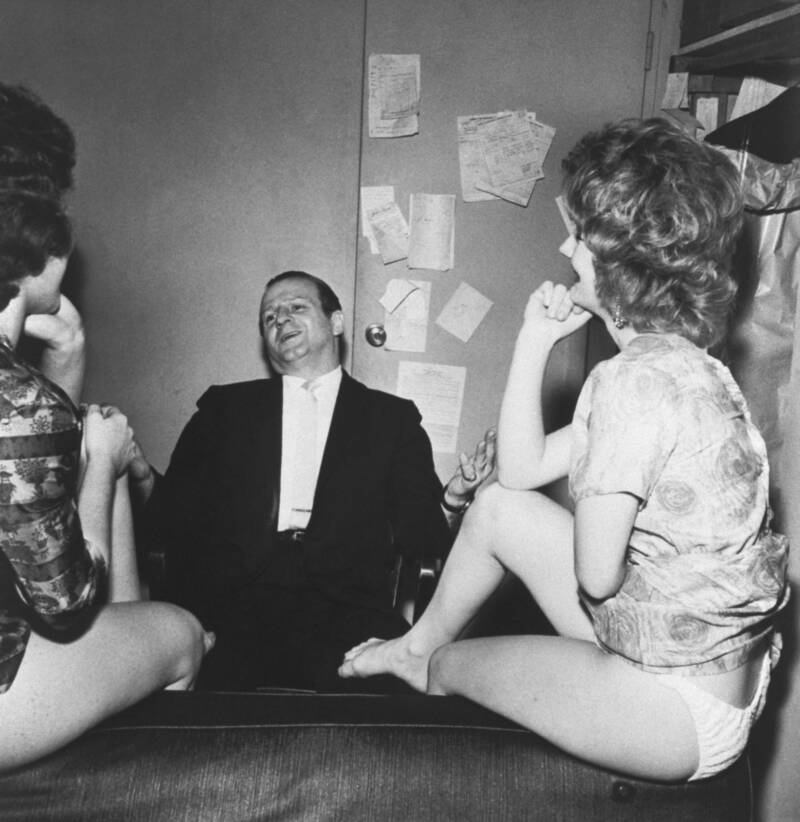
Corbis via Getty ImagesRuby’s mother suffered from a mental disease before she died of a heart condition. His father died only a few years before Ruby was sentenced to death.
She was admitted to a mental hospital numerous times during this period, and eventually died of a heart condition on April 11, 1944. Ruby’s father stayed with the children until he died on Christmas Eve of 1958.
Jack Ruby’s First Forays Into Crime
Ruby’s education didn’t seem to advance past high school as there are no records past his freshmen year. With little education and trouble at home, Ruby began to scalp tickets and sell anything he could to make a buck. He was particularly interested in sports paraphernalia.
According to History, Ruby worked a number of odd jobs throughout his youth and early adulthood, from door-to-door sales and street hustling to aircraft mechanic in the Army Air Forces during World War II.
By the late 1940s, Ruby moved to Dallas, Texas where he established himself as a nightclub owner of the burlesque Carousel club and a gambling aficionado by 1960.
He was arrested several times for minor offenses, established connections with the local mob, and garnered an ill-advised reputation as a name-dropper and attention seeker. He also allegedly had ties to the local underworld and police.
According to a 1978 report by New Times, Ruby had met on occasion with Miami gangster, “Handsome” Johnny Roselli, who himself was later tied to a CIA-led conspiracy to assassinate Castro alongside gangsters Santo Trafficante Jr. and Sam Giancana.
Ruby may also have been a part of a scheme to smuggle guns to Cuba before their revolution and at some point, allegedly worked with the FBI but provided them with useless information.
The Assassination Of JFK
On November 22, 1963, President Kennedy was fatally shot through the throat and in the head. Texas Governor John Connally, who was riding in the front of the Lincoln limousine, was hit in the back, right wrist, and thigh. Because of the number of bullet wounds on both men, speculation about whether multiple shooters could have been involved persists.
After the assassination at 12:30 p.m., the Kennedy motorcade sped to Parkland Memorial Hospital where the president was officially pronounced dead at one p.m. The bullet used by the Warren Commission to argue that a single bullet was responsible for the casualties was found on a gurney at that hospital in “pristine” condition.
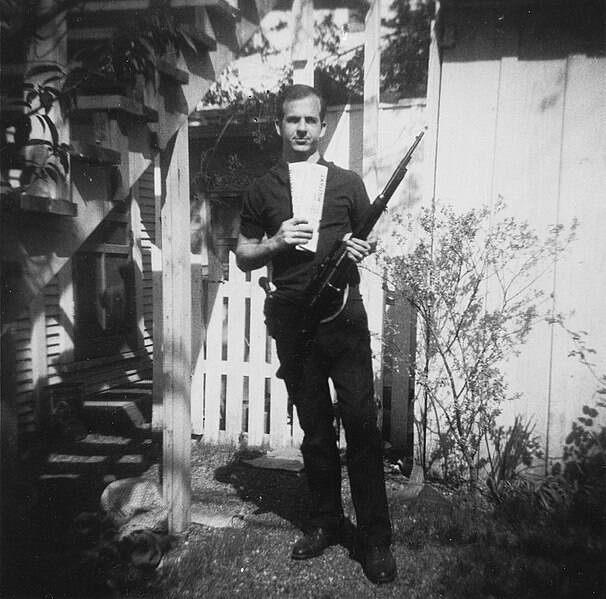
Wikimedia CommonsThe Warren Commission claimed Lee Harvey Oswald killed President Kennedy and wounded Governor Connally with one bullet that traversed seven layers of skin, broke numerous bones, and made a mid-air turn. Oswald denied shooting anyone until the day he died.
According to Business Insider, meanwhile, Lee Harvey Oswald left his job at the Texas School Book Depository at Dealey Plaza and went home to get his pistol before heading back out. Dallas police officer J.D. Tippit reportedly spoke with someone that matched Oswald’s description — who had already been radioed in as a suspect — and was shot dead.
Oswald was arrested at 1:40 p.m. while sitting in a movie theater screening of War is Hell. He resisted arrest and nearly fired his gun, but police were able to stop him. He was punched in the face, giving him the famous black eye seen in most post-arrest photos of him.
Vice President Lyndon Johnson was sworn into presidential office aboard the Air Force One, while a blood-splattered Jacqueline Kennedy attempted to process what had happened a mere hour ago.
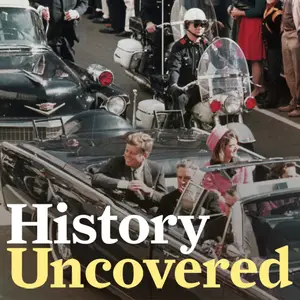
The medical examiner initially refused to release the president’s body to the secret service on the grounds that an autopsy had to be performed before the body could be moved from Dallas to Washington, D.C. But both President Johnson and Dallas district attorney Henry Wade overrode these standardized procedures and the president’s body was ultimately confiscated.
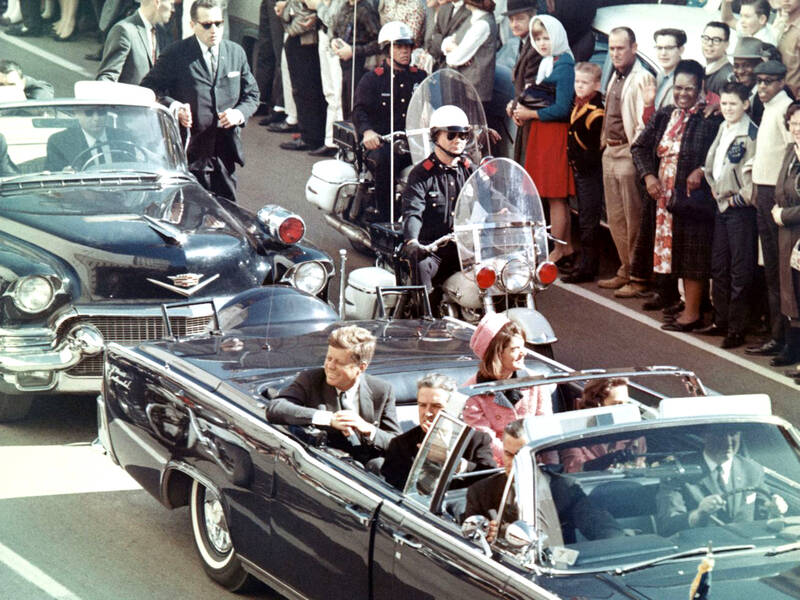
Wikimedia CommonsLee Harvey Oswald told the press that he didn’t shoot anybody and thus had nothing to be ashamed of. Two days after Kennedy’s assassination on November 22, 1963, he was gunned down himself by Jack Ruby.
With Oswald arrested, Kennedy’s body taken away, and a nation in mourning, the one shred of relief the country seemed to have was that the lone gunman had been successfully located and arrested.
When asked if he’d like to hide his face from the barrage of press photographers, Oswald said the following:
“Why should I? I haven’t done anything to be ashamed of.”
How Jack Ruby Murdered Lee Harvey Oswald
Jack Ruby’s mutual relationship with Dallas police frequently ended in leniency for his crimes. Skeptics of the Warren Commission often cite these connections as an explanation for why Ruby so easily shot Oswald.
Reporters were normally required to identify themselves with press passes, but the Dallas Police Department’s Captain King said that it was impossible due to “the atmosphere that existed over there, the tremendous pressures that existed, the fact that telephones were ringing constantly.”

Wikimedia CommonsHarvey Lee Oswald’s mugshot on November 23, 1963.
According to Assistant Chief of Police N.T. Fisher, “anybody could come up with a plausible reason for going to one of the third floor bureaus and was able to get in.” Indeed, even Jack Ruby was present on that third floor on where Oswald was held the night after Kennedy’s death. Oswald was walked in unprotected and interrogated and sometimes even answered questions posed by the reporters that had infiltrated the building.
The decision to move Oswald to the county jail on Sunday morning was made by Chief Curry the previous night. When he determined that it would happen at 10:00 a.m., he told “the newspaper people.”
“I believe if you are back here by 10 o’clock you will be back in time to observe anything you care to observe,” he said. That night, between 2:30 and three a.m., the local FBI and sheriff’s offices received calls from an anonymous man who warned that a committee had decided “to kill the man that killed the President.”
It was Curry who decided on the basement of the Dallas police headquarters as the best route to transport Oswald. At 9:00 a.m., police cleared the basement, leaving only police personnel inside. Guards were stationed at the top of both onramps. After that, the police allowed reporters to enter.
When Oswald got to the basement, 40 to 50 reporters and 70 to 75 cops filled the room. The masses erupted with energy when Captain J. Will Fritz and two detectives escorted the suspect out.
“Here he comes!” Somebody shouted.
“Almost the whole line of people pushed forward when Oswald started to leave the jail office, the door, the hall — all the newsmen were poking their sound mikes across to him and asking questions, and they were everyone sticking their flashbulbs up and around and over him and in his face,” Detective B.H. Combest recalled.
After walking 10 feet from the door of the jail office, Oswald was shot in the stomach. Jack Ruby had appeared out of the masses, passing between a reporter and a detective, and fired a single .38 caliber bullet into Oswald, killing him.
“You all know me! I’m Jack Ruby,” he shouted as he was wrestled to the ground.
The Trial Of The Man Who Shot Lee Harvey Oswald
Millions of viewers watched Ruby shoot Oswald at 11:20 a.m. Famous lawyer Melvin Belli took on Ruby’s defense pro bono and he failed to change the trial’s venue to anywhere but Dallas. Of the eight men and four women jurors, one had seen Ruby shoot Oswald on live television.
During the trial of the man who killed Lee Harvey Oswald, 20 prosecution witnesses testified. Detective James R. Leavelle, who was cuffed to Oswald during the shooting, said that Ruby exclaimed, “I hope the son-of-a-bitch dies.” Officer D.R. Archer testified that Ruby said, “I intended to shoot him three times” while being placed under arrest.

Wikimedia CommonsJack Ruby allegedly said that he intended to shoot Oswald at least three times but was detained before he could.
While Officer Thomas D. McMillon testified that he heard Ruby say, “You rat son-of-a-bitch, you shot the president,” the television footage clearly showed McMillon far removed and even looking away from the incident.
The defense was primarily focused on presenting Ruby as psychologically troubled so as to at least avoid the death penalty. Belli first called 19-year-old stripper Little Lynn to the stand who said Ruby “had a very quick temper. He’d fly off the handle.”
Another stripper called Penny Dollar testified that Ruby once beat a taxi driver’s head in on the sidewalk, suddenly stopped, and asked, “Did I do this?”
To their point, the man who killed Lee Harvey Oswald had been known to get into scuffles around his nightclub and behave erratically at times. He’d often fire dancers just to demand why they hadn’t been back at work afterward.
Testimony from clinical experts, of course, was the most vital to Ruby’s insanity defense. Associate clinical professor of psychiatry and psychology at Yale University, Dr. Roy Schafer, introduced the notion of psychomotor epilepsy to the trial.
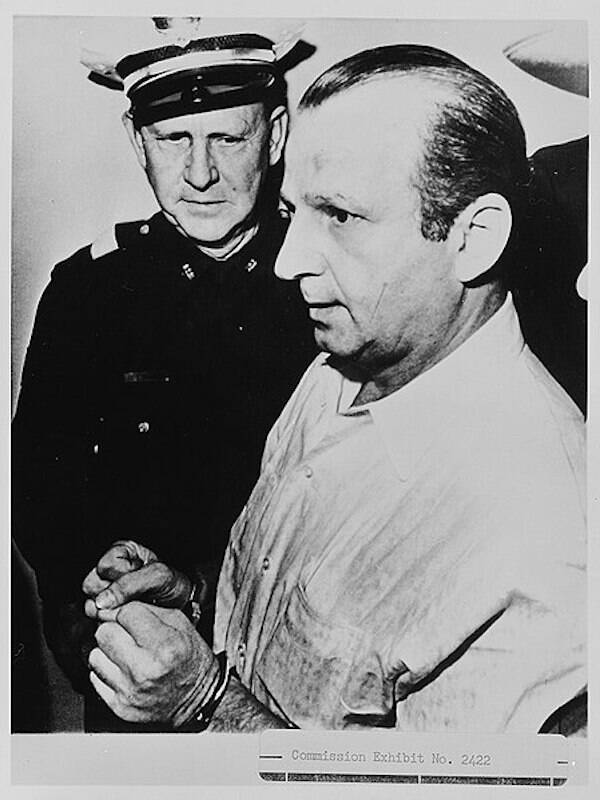
Wikimedia CommonsJacky Ruby successfully received a new trial as his statements to police after the shooting shouldn’t have been admissible as evidence. He died of cancer before this second trial could begin.
“I determined that he did have organic brain damage,” said Schafer. “The most likely specific nature of it was psychomotor epilepsy.”
Dr. Manfred S. Guttmacher, chief medical officer of the Supreme Court of Baltimore, stated the following:
“I don’t think he was capable of knowing right from wrong or understood the nature and consequences of his act. I think he was struggling to keep his sanity… I think he had an unusual degree of involvement in the whole tragedy…[there was] disruption of his ego, a very short-lived psychotic episode in which the hostile part of his makeup, which is very strong, became focused on this one individual. Homicide was the result.”
Ultimately, the jury deliberated for a mere two hours and 19 minutes on March 14, 1964, before finding Jack Ruby “guilty of murder with malice, as charged in the indictment, and [we] assess his punishment at death.”
Over two and a half years of appeals followed, with one success. On October 5, 1966, the Texas Court of Criminal Appeals found that the statements Ruby made to police right after shooting Oswald shouldn’t have been admitted as evidence during the trial. Also, holding a trial in Dallas was deemed utterly unfair to him. His death sentence was overturned.
Though a new trial for the man who shot Lee Harvey Oswald was scheduled to take place in February 1967 in Wichita Falls, Texas, Ruby became too sick to move. He had complained of stomach pain for a while but jail doctors hadn’t taken these gripes seriously. Upon later inspection, Ruby was diagnosed with cancer of the liver, brain, and lungs.
On his deathbed, Ruby gave an interview with his attorney and brother from Parkland Memorial Hospital in Dallas, Texas. During it, he recounted the day he killed Oswald. He insisted that he killed Oswald in retribution for JFK’s assassination.
You can listen to a condensed version of the audio recording, here.
Jack Ruby, the man who shot Lee Harvey Oswald, died in custody on January 3, 1967.
New Evidence Comes To Light
The 2017 release of JFK files revealed that Ruby told an FBI informant to “watch the fireworks” on the day Kennedy was killed.
According to The Independent, he made these comments mere hours before the president was murdered.
“The informant stated that on the morning of the assassination, Ruby contacted him and asked if he would ‘like to watch the fireworks,'” the FBI file stated. “He was with Jack Ruby and standing at the corner of the Postal Annex Building facing the Texas School Book Depository Building, at the time of the shooting.”
“Immediately after the shooting, Ruby left and headed toward the area of the Dallas Morning News Building, without saying anything to him.”
The document strongly suggested that Ruby would likely not have killed Oswald because he was angry about Kennedy’s assassination.

Wikimedia CommonsThe man who killed Lee Harvey Oswald was riddled with cancer. He died less than three years later.
Unfortunately, we’ll likely never know for sure what the impetus behind Ruby’s actions was. Perhaps the man who killed Lee Harvey Oswald was trying to avenge John F. Kennedy and his family. Or perhaps he was a cog in a much larger conspiracy. But it is also plausible that in the chaos, a mentally unstable man with multiple tumors growing inside him decided to violently act out.
Although, it does certainly seem as though Ruby was aware of a nefarious plot in Dallas on Nov. 22, 1963, before the murder even happened, which makes his eternal silence all the more unfortunate.
After learning about Jack Ruby, the man who killed Lee Harvey Oswald, read about the magic bullet theory which claimed that JFK and Texas Governor John Connally were struck by the same bullet. Then, learn bout Judith Exner, JFK’s mob-affiliated mistress.
